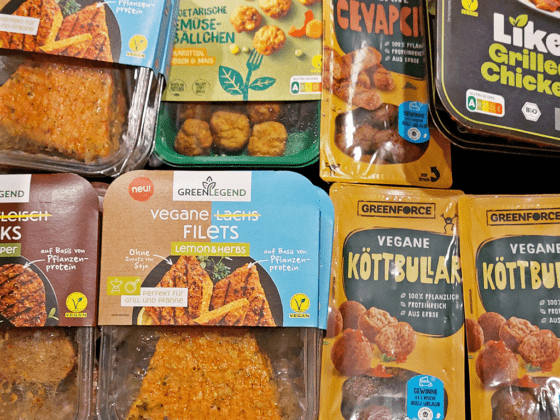15 QUESTIONS AND ANSWERS
Our “pet” is black on the bottom and blue on top. When we travel, it must be cared for, guarded and moved by dear neighbors. It is our paper garbage can. It is emptied only once a month. If that should go wrong just once, we will sink into cardboard chaos: boxes will then pile up to the ceiling, gradually flood all the rooms and call the exhibition team on the plan …
By our author Ulrike Seidel
It feels like we have a lot more waste paper than we used to – even though we don’t subscribe to any newspapers, there’s a “No advertising, please” sign on the mailbox, and copy paper is printed on both sides in our house.
My husband, who must have been a gifted Tetris player when he was young, regularly folds, creases and sorts the paper waste in such a way that it comes close to filling the blue garbage can. Maybe he even secretly keeps an Excel spreadsheet. And yet…
Sometimes the school collects waste paper or the fire department. But when I initially rejoiced and thought I could charitably donate several trunk loads of cardboard, came the rude awakening: nix there! They want only the very finest newspapers.
Is there about good and bad waste paper? And does not it all end up in Africa anyway? And do we recycle about so little that we even have to import toilet paper?
flustix has taken a closer look at the topic of waste paper – and answered the 15 most important questions.
1. How much paper are we actually talking about?
The per capita consumption of paper per year is calculated at 227 kilos, of which about 105 kilos in private households. In 2020, 18.3 million tons of paper were consumed in Germany – and 14.5 million tons of recovered paper were collected by private and municipal waste management companies. That is a waste paper return rate of 79 percent.
2. Could we collect even more waste paper if we made more of an effort?
No, about 21 percent of the paper consumed is not recyclable and collectable, primarily of course the hygiene papers (toilet paper, tissues, etc.). However, the collected paper is recycled on average 3.5 times in Europe.

3. Is our new paper made from trees or really from waste paper?
Mostly actually made from waste paper. According to information from the Federal Environment Agency, 21.4 million tons of paper were produced in Germany in 2020. 79 percent of the raw material was waste paper, totaling 16.9 million tons. Half of hygiene papers are made from virgin fibers and half from recycled paper. Particularly in the case of sanitary papers, but also in the case of other products, the proportion of recovered paper could still increase if more recycled variants were purchased. By the way, recycled paper can be recognized by the official and independent seals, to which flustix also belongs. What we do there exactly, is here.

4. Is the collected waste paper enough to make enough new paper from it?
No, part of the raw materials must be imported! From January to August 2021, for example, about 3.4 million tons of waste paper and 3.0 million tons of wood and pulp came to Germany. Most of the pulp for the German paper industry came from Brazil, Sweden and Finland.
5. Is part of the waste paper from the Blue Bins also simply incinerated?
No, waste paper is far too valuable for that – and usually too scarce anyway. 99.3 percent of the waste paper collected in Germany is recycled, for example for the production of new paper. Waste products from subsequent paper production, however, are burned.
6. is recycled paper really good for the environment – or yet eyewash?
Often you hear that paper recycling protects the forests – but that’s supposedly it with the benefit for the environment and nature. Too energy-intensive processes, too much chemistry. But that’s not true. The environmental state had the eco-balance of graphic papers tested – these are papers for newspapers and magazines, writing or copying papers. The recycled paper won against the fresh-fiber one in almost all points:
- Lower wood consumption and thus protection of forests
- Less intensive bleaching than virgin fiber paper
- Only 50 percent of energy required and 15 to 33 percent of water required
- Average 15 percent lower greenhouse gas footprint
Example: When buying a package of printer paper (500 sheets) in recycled quality, you save 5.5 kilos of wood and 7.5 kilowatt hours of energy. With this, you can make 525 cups of coffee – and the tree also remains standing.
With which idea the start-up PappUp already intervenes in the waste paper cycle, you can learn here.
7. Is our waste paper actually sorted or simply shredded?
It must be sorted to get the right raw material for the right purpose and to avoid, for example, “downcycling” from good magazine paper to cardboard. There are more than 60 categories of waste paper in the industry. Tip of the disposal companies: The waste paper please do not tear small if possible – otherwise the sorting is much more difficult.
8. Is it true that our waste paper is not even enough for toilet paper and we have to import it?
“Have to” maybe not, but Germany is a big player in the paper world market. Per year, 750,000 tons of toilet paper are produced in Germany – 3.4 percent of total paper production. Every sixth roll is exported.

But just as much toilet paper is imported again. Germany is the world’s second-largest toilet paper exporter (after China) and second-largest importer (after the United States). According to the WWF, in 2019 Germany was the world’s largest importer of paper, followed by the U.S., and the world’s largest exporter of paper, also followed by the U.S.
9. The Africa myth: Is it true that our waste paper ends up illegally in Africa?
No, the African continent plays no role at all in our waste paper. But for years, tens of thousands of tons were shipped to Asia – especially China, India and Thailand. In the meantime, our recovered paper stays close by. The main importers of recovered paper from Germany have long been the Netherlands (627,000 tons in 2021), Austria (378,000 tons), France (348,000 tons) and Switzerland (93,000 tons).
10. The China myth: Why did we suddenly have full warehouses and too much waste paper?
Asia stopped taking waste paper from Europe in 2018. China tightened the quality requirements for waste so drastically that this regulation amounted to an import stop. Other Asian countries such as Thailand or Indonesia had to follow suit. As a result, millions of tons of paper flooded the European market – and prices dropped dramatically. Convenient for the paper industry, but dramatic for the waste management companies.
Read more about German waste exports to Asia here.
11. How much is recovered paper actually worth?
Before the “Asian crisis”, “sorted mixed waste paper” was traded for 140 euros per ton according to the wholesale price index – annual average 2017. Prices plummeted, in March 2020, the ton was flogged for just 13 euros. The disposal companies had problems storing and getting rid of our waste paper at all and got into economic difficulties. The reason: in many municipalities, the proceeds no longer covered the costs of collection. In Corona year 2021, waste paper became more expensive again. The price rose rapidly within a few months. Now, in August 2022, the ton of waste paper cost 208 euros, the highest quality grade (magazines) is currently traded even for 265 euros.
12. Can I use waste paper to increase the household budget?
High-quality waste paper (mostly without cardboard boxes) is actually purchased from recycling centers as in the past. Per kilogram you currently get about 9 cents. That’s still 90 euros per ton. Who collects for example in associations, schools or together with the neighbors and a recycling yard in the proximity has, can earn money thereby. Best to research beforehand or inquire and compare purchase prices.
13. What is made from our recovered paper?
The paper industry has changed in recent years: from the production of graphic papers (for newspapers, brochures) to packaging papers and boards. Example corrugated paper, which is used for padding cartons: in 2010, 1.6 million tons were produced in Germany, in 2020 it was already 4.4 million tons – an increase of 170.3 percent (Destatis).

14. The amount of waste paper is falling, but the garbage cans are overflowing – how can that be?
The type of paper has changed. Instead of newspapers, flyers and brochures now mainly used shipping boxes end up in the blue garbage can. Ingbert Liebing, Chief Executive of the Association of Municipal Enterprises (VKU): “The Corona pandemic has once again clearly reinforced an economic trend of recent years: the rapid growth of the online or mail-order business. The cardboard boxes consume a lot of space in the collection garbage cans, are placed next to the garbage cans and delay the collection process.” According to VKU research, cardboard now accounts for 70 percent of volume – but only 30 percent of weight. So the garbage cans are overflowing, but still bring in less money than before.
15. What all does not belong in the waste paper?
To “save” the paper garbage cans, we should fill them only with paper and cardboard. The following items do not belong in the waste paper: Diapers, vacuum cleaner bags, carbon paper, baking paper, dirty cardboard and paper packaging, photos, kitchen paper and dirty napkins, paper handkerchiefs, beverage cartons, coffee-to-go cups, sales slips, tickets, impregnated posters, muffin tins, hamburger wrappers, dirty pizza boxes, papers made with plastic paints or films, paper with glue (sticky notes, address labels, self-adhesive seal on envelopes).
Conclusion: To be successful monthly at the Blue Bin Tetris, we have the following plan: continue to sort and stack well, keep good shoe boxes as gift wrapping (Christmas!), combine several online orders, no more cardboard boxes from the supermarket mit-schleppen (six-pack oat milk), use cardboard and paper for raised beds or for mulching in the garden, keep boxes and reuse for Ebay sales. And: give the neighbors a bottle of rosé every now and then for their “pet care”.
 English
English Deutsch
Deutsch




